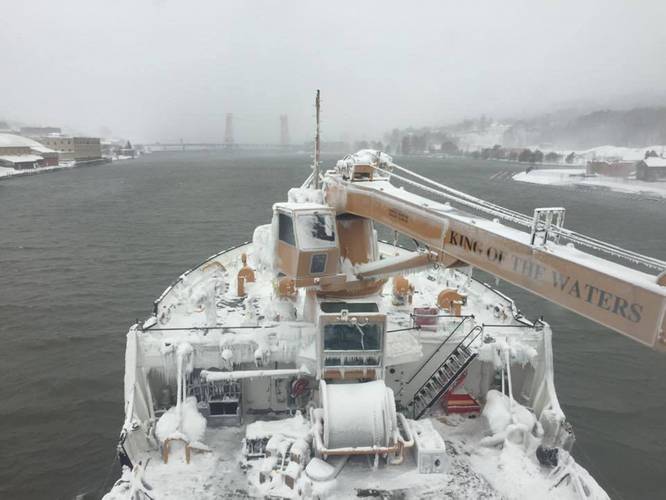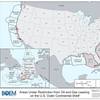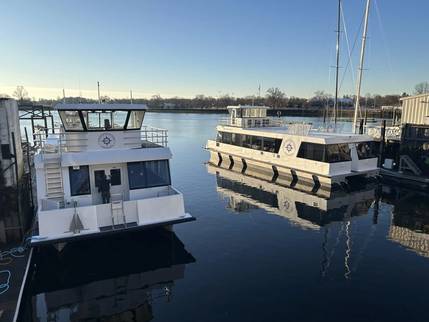U.S. Coast Guard Sector Sault Sainte Marie commenced Operation Taconite Monday in response to developing ice conditions in the commercial ports of western Lake Superior and the St Marys River.
Operation Taconite is the Coast Guard’s largest domestic ice-breaking operation, encompassing Lake Superior, the St. Mary’s River, the Straits of Mackinac and Lake Michigan.
As a result of the operation, certain waterways may close after due consideration is given to the protection of the marine environment, waterway improvements, aids to navigation, the need for cross-channel traffic, such as ferries, the availability of icebreakers, and the safety of island residents, who in the course of their daily business use naturally-formed ice bridges for transportation to and from the mainland.
Monday, the U.S. Coast Guard Cutter Alder, homeported in Duluth, Minnesota, was directed to manage the ice-breaking needs of western Lake Superior. The U.S. Coast Guard Cutter Biscayne Bay, homeported in St. Ignace, Michigan, was dispatched to break ice in the St Marys River. As ice growth continues on the Great Lakes in the coming days and weeks, additional Coast Guard icebreakers will join the operation.
Currently there are no channel closures; however, the implementation of Operation Taconite does place additional measures on commercial shipping in the Western Lakes, St. Marys River, and the Straits of Mackinac. These measures include restricting tanker transits to daylight only in the presence of ice, reducing speeds by two miles per hour in various locations, and requiring additional voice and position reporting points throughout the area.
Recreational users there are reminded to plan their activities carefully, use caution on the ice, and stay away from shipping channels. Recreational users and island residents should stay tuned to local media resources for the status of waterway closures.


















